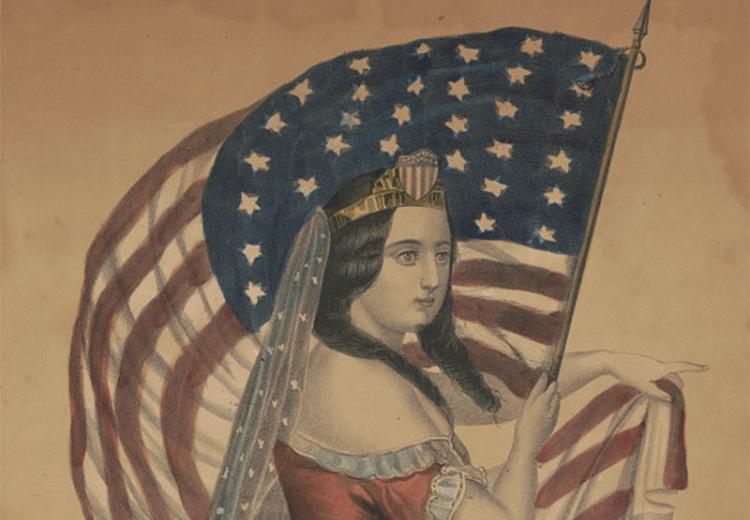Oh, Say, Can You See What the Star-Spangled Banner Means?

Currier & Ives - Star spangled banner.
"[The War of 1812] inspired a fresh wave of patriotism in a generation too young to remember the Revolution. When [Francis Scott] Key declared that “our flag was still there,” he fused the physical symbol of the nation with universal feelings of patriotism, courage, and resilience. By giving the flag a starring role in one of the most celebrated victories of the war, Francis Scott Key’s song established a new prominence for the flag as an expression of national identity, unity, and pride."
-"Symbols of a New Nation", The Star Spangled Banner.
Prior to 1814, other American symbols were more prominent than the American flag. Early American gold coins, for example, featured the eagle and the "Liberty Cap." While the Liberty Cap is scarcely recognized today, the American flag has grown in importance. The flag became "the primary symbol of American patriotism" after Francis Scott Key's poetic account of the bombardment of Fort McHenry stirred a powerful sentiment in the American people.
Using archival documents and images, students will associate Key's words with historic events and recognize the sentiment those words inspired. In the second part of the unit, students will review the symbols within the flag and look at some historic images of the flag that have become part of our national consciousness.
Guiding Questions
In what ways do the lyrics of "The Star-Spangled Banner" reflect actual events?
What evidence do we have of its popularity?
What are some events involving the flag that have contributed to Americans' image of their flag and their country?
Learning Objectives
Indicate phrases from "The Star-Spangled Banner" that refer to the bombardment of Fort McHenry
List ways in which the American flag is used
Discuss the symbols within the American flag and some ways in which the flag has been used as a symbol of the Unites States
